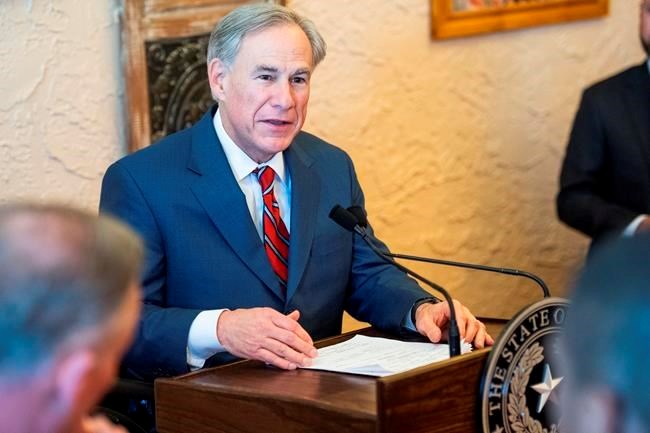WASHINGTON — The United States is at a COVID-19 crossroads — and public health officials are worried about which path the country will choose.
After a year of more than 513,000 deaths, a devastating economic crisis and restrictions on their personal freedoms, Americans have been basking in a recent torrent of seemingly good news.
Daily caseloads are well off their January peaks, President Joe Biden is promising enough vaccine for every U.S. adult by the end of May and state after state is throwing off the shackles of the pandemic.
Not so fast, the director of the U.S. Centers for Disease Control warned Wednesday.
"We are at a critical nexus in the pandemic," Dr. Rochelle Walensky told a briefing by the White House COVID-19 response team, her second straight day of waving a red flag.
The seven-day average rate of new cases in the U.S. is currently about 66,000, she said — a 3.5 per cent increase over the previous seven-day period, which itself was up 2.2 per cent.
And "hyper-transmissible" variants of the virus, including the one known as B.1.1.7, are looming large, "ready to hijack our successes to date."
Americans are in a weakened and vulnerable state after having waged war against COVID-19 for the last 12 months, she acknowledged.
"Stamina has worn thin, fatigue is winning and the exact measures we have taken to stop the pandemic are now too often being flagrantly ignored," Walensky said.
"How this plays out is up to us."
As caseloads have come down over the course of the last two months, states and municipalities have gradually eased restrictions. Virginia, Massachusetts and South Carolina are among those that pushed back curfews and lifted limits on indoor dining and large gatherings in recent days.
Texas and Mississippi went even further, promising Tuesday to lift all restrictions and mask-wearing mandates by next Wednesday, if not sooner.
"It is time!" tweeted Mississippi Gov. Tate Reeves, a Republican, as he announced an immediate end to all statewide restrictions.
"We need to recognize that none of these orders, in any state, are anything short of unprecedented. They have to end at the earliest possible moment. This is that moment for Mississippi."
Texas Gov. Greg Abbott said his order, which takes effect March 10, is the result of an accelerating rate of vaccinations — 229,000 alone on Wednesday, he said — that is resulting in fewer people in hospital.
"We are able to contain COVID and safely allow Texas to open 100 per cent."
Biden dismissed those attitudes Wednesday as "Neanderthal thinking."
"It's critical, critical, critical, critical that they follow the science," he said. "I wish to heck some of our elected officials knew it."
Prime Minister Justin Trudeau all but ignored questions Wednesday about the shifting perspectives south of the border, focusing on his government's own vaccination timetable.
All Canadians who want the vaccine will be able to get it by the end of September, he vowed — maybe sooner if the stars align.
But he wasn't about to allow any mixed messages to pull focus away from Canada's vaccination efforts.
"Obviously, the pandemic has had a very different course in the United States, with far greater death tolls and case counts, and that has had its own impact on the American economy that Canadians haven't quite felt the same way," he said.
"We're going to continue to work to get as many Canadians vaccinated as quickly as possible by following the science and following the best recommendations of our experts."
That's what the president is doing, and what people in states where restrictions are being lifted should be doing as well, said White House press secretary Jen Psaki.
"This entire country has paid the price for political leaders who ignored the science when it comes to the pandemic," Psaki said.
She acknowledged the hard-won gains of a difficult year, and how Americans have good reason to start feeling optimistic, whether it's news about vaccines or fully stocked grocery store shelves.
"But there's still more work that needs to be done," she said. "We need to remain vigilant."
This report by The Canadian Press was first published March 3, 2021.
James McCarten, The Canadian Press



